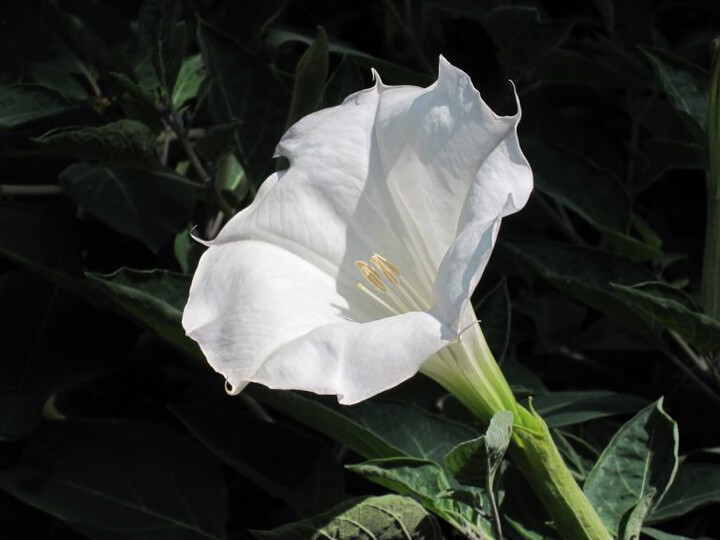
Nature is alive and effective 24 hours a day. Moon flowers are nocturnal bloomers, best enjoyed by late night strollers and night owls.
Post sunset, these magnificent, light-reflecting white flowers bloom and glow all night long – hence their name. However, when the sun begins to rise, they close their perfectly perfumed flowers tightly shut. Although moon flowers are predominantly white, they are also available in rich reds and vibrant yellows, all of which will add contrast to your floral display.
Although extremely beautiful, several species of moon flowers are very poisonous. It’s therefore a good idea to exercise caution when choosing late night bloomers for your garden.
Moon flowers
Moon flowers (also known as Ipomoea alba) are extremely large in size and boast a strong fragrance.
They get their name due to the fact they only bloom at night. Gardeners will often plant these flowers alongside morning glories as the two not only complement each other, but they are in actual fact related. They are best planted close to a wall or trellis as they are fast-climbing plants and can grow up to ten feet in size.
Although it is difficult to germinate the seeds, once growing, these climbers are extremely enthusiastic. For best results, begin planting the seeds indoors in peat pots and place the pot in a warm, sunny location, such as close to a window. Although hardy in warmer climates, it’s important to treat them as annuals in cooler climates. If you wish to grow them again next season, you’ll be pleased to learn moon flowers produce a number of seeds.
Flowering Tobacco (Nicotiana alata)
Flowering tobacco (Nicotiana alata) is part of the Nightshade family.
In 2009, the National Garden Bureau named nicotiana the flower of the year, due to its captivating fragrance and fascinating beauty.
Classically, the garden variety boasts huge, trumpet-shaped blooms. When darkness descends, these picture-perfect flowers come to life in an array of red, pink, purple, green and yellow hues. The majority of species grow to be five foot tall; however, florists and botanists are now developing a specie of Flowering Tobacco that is much more compact in size. These plants should be treated with great care.
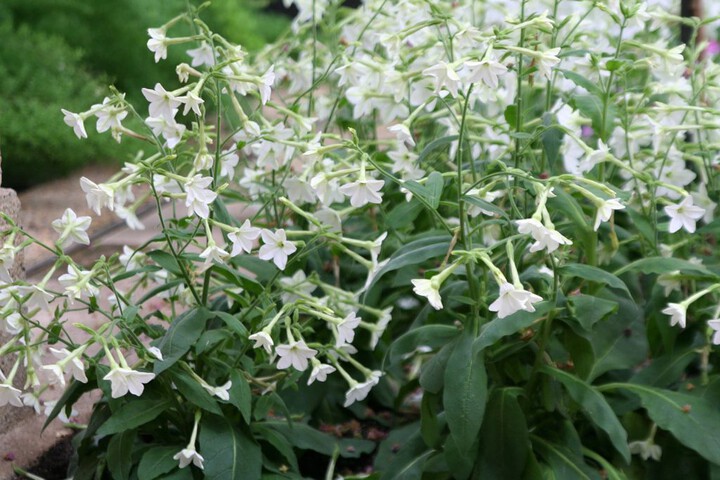
Evening Primrose
The common evening primrose (Oenothera biennis) boasts a series of pretty, pale yellow flowers that bloom at dusk and close at sunrise.
They offer a pleasant scent, which is similar to that of lemons. On average, these species of moon flowers grow between four and six feet in height with flowers spanning between one and one and half inches wide. If you long for a garden brimming with flowers throughout the summer, simply plant Evening Primrose in full sun.
They’re originally native to North America and due to their hardy temperament, they are often found in unused yards and along roadsides. These primroses can also survive in very low temperatures, ranging from 15 to 20 degrees Fahrenheit (-10°C to -6°C).
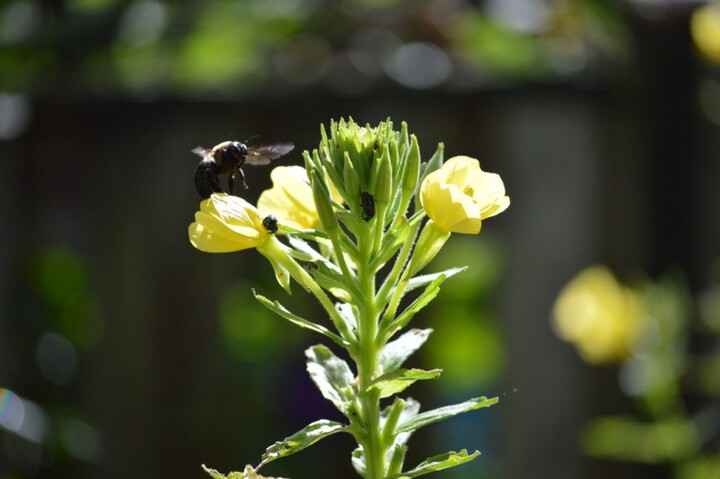
Angel’s Trumpet
Angel’s trumpet (Datura innoxia) grows an average of three to four feet in height and yields huge flowers (around six inches wide), which are typically yellow or white in hue.
The flowers, similar to all species of moon flower, come alive at night. However, the Angel’s Trumpet specie will also bloom into the early morning hours.
The plants yield flowers from midsummer until late September, when the first frost strikes. Although native to the warmer climate of South America, this specie can survive in just five degrees Fahrenheit (-15°C). This moon flower boasts an incredible fragrance and dark bluish-green foliage. Don’t be fooled by its beauty however, as this plant is poisonous.
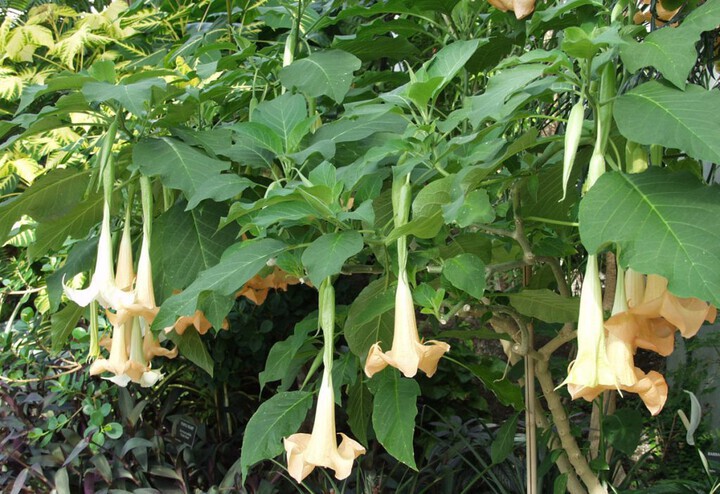
Four o’clock
Four o’clocks (Mirabilis jalapa) bloom solely in the evening. This is when they show off their delicate yellow and red blooms.
They are extremely perfumed and as such, attract an array of wildlife, including hummingbirds to the garden. A number of green-fingered connoisseurs have nicknamed this specie of moon flower “the marvel of Peru” as it is native to the country.
Four o’clocks are very hardy in style and can survive in temperatures as high as 40 and as low as five degrees Fahrenheit. In other parts of the world, they should be grown as annuals. To look at, these plants are very bushy and boast an abundance of dark green foliage, which can reach a height of 48 inches.
They prefer the months of late summer and early September to bloom and boast flowers that measure two to three inches in diameter. It’s important to note that the seeds produced by four o’clocks are highly poisonous.
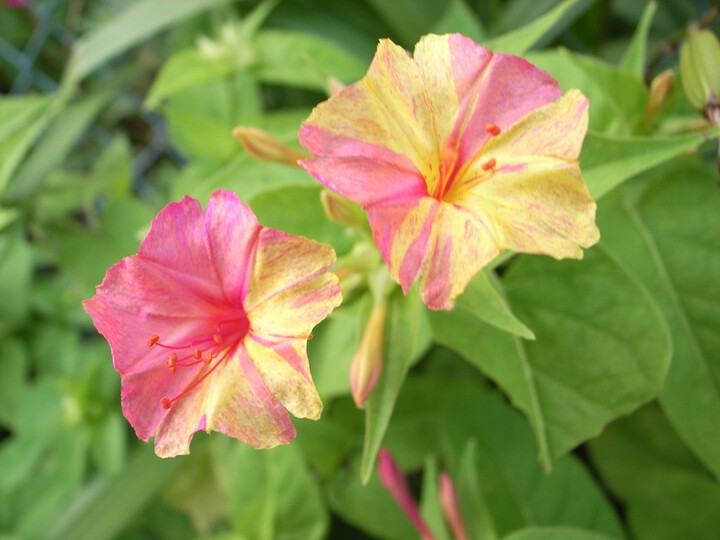
Night Bloom Water Lilies
These tropical moon flowers are exquisite night-bloomers.
Due to their beautiful hues of pink, crimson, purple and red, they will never go unnoticed. These water lilies bloom in the evening twilight and come in the shape of an incredibly beautiful floating flower. The dark backgrounds of the ponds they live in only adds to the intensity of the flower’s colour.
In comparison to hardy lilies, they are much bigger in size and in most cases, boast a much more intense colour. Each flower boasts between 19-20 petals and the flowers measure seven to 10 inches in size. Their scent however is a little on the pungent side.

Night Gladiolus
These creamy yellow flowers boast the Botanical name Gladiolus Tristis. Asides from their beauty, they boast a sweet, spicy fragrance. They usually thrive in dense areas, where heavy rainfall is a given. They tend to grow to 48 inches in height and bloom in late spring and early summer.
This moon flower’s name in Latin means night sword and it attracts an abundance of wildlife, yet can be poisonous to humans and will often cause skin irritations.
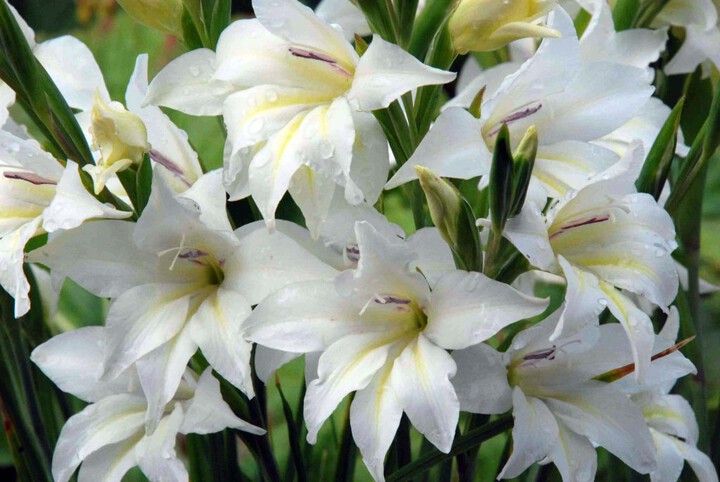
As you can see there is plenty to consider if you planning to put moon flowers in your garden. While the vast majority will be incredibly pretty to look at, many are also poisonous and so they are best kept out of spaces that are regularly used by children or pets.